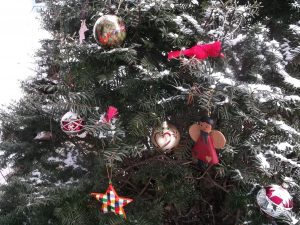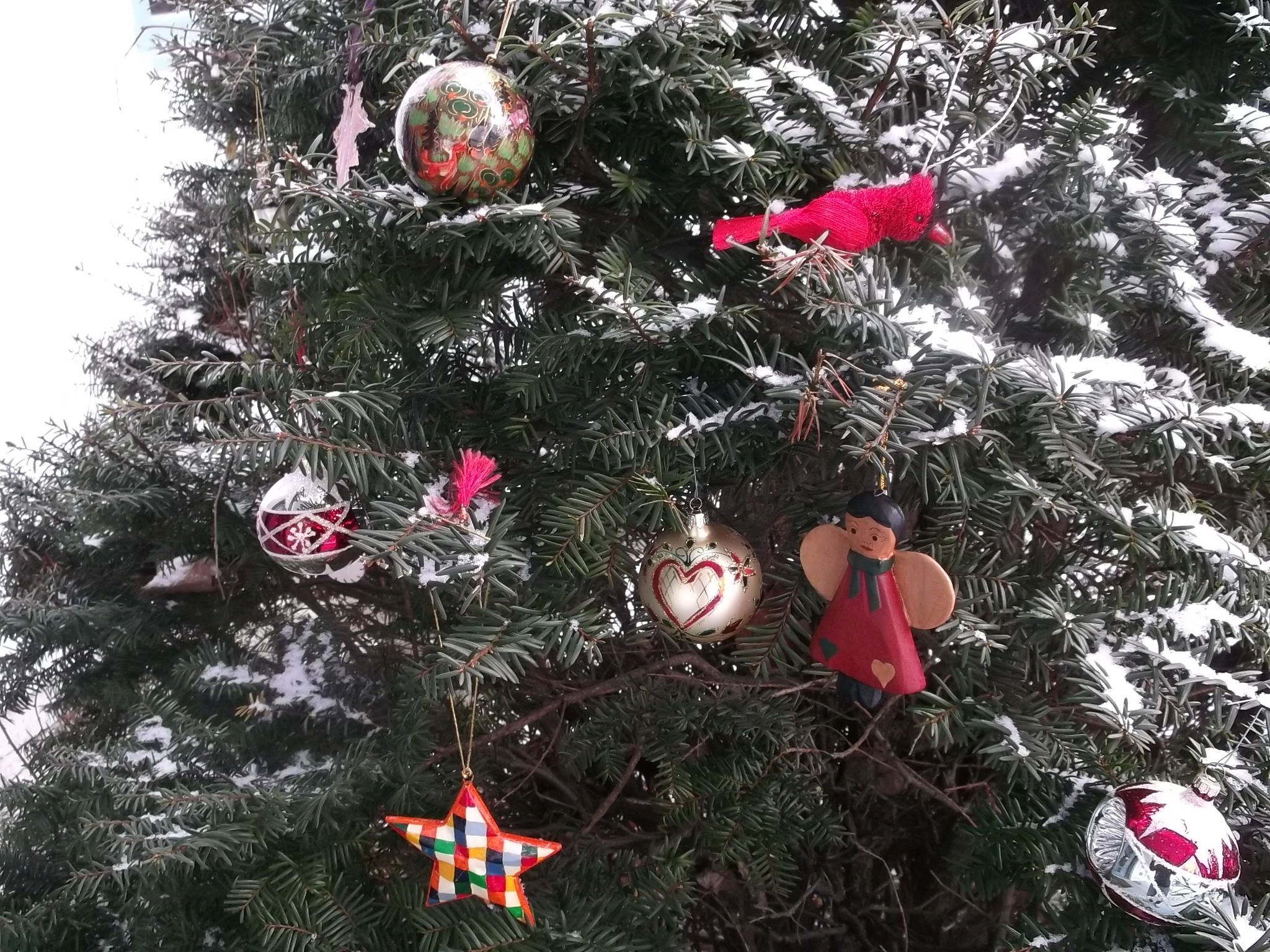
For allergy sufferers…the best place for a live Christmas tree? Outside! (Preferably viewed from your window)…
One of the things I loved about our old farmhouse in upstate New York was celebrating Christmas with a live tree.
Picking a tree and hauling it home was always a holiday ritual to which I looked forward.
Oh, sure, I noticed that I always felt somewhat rundown, that I seemed to sneeze, sniffle and have more of a runny nose once we put the tree up and decorated it, but the idea that it could possibly be the Christmas tree itself causing my symptoms? Inconceivable!
I always attributed my symptoms to a pending cold.
There are a lot of cold viruses going around in December, acknowledges Dr. Lawrence Kurlandsky, a pediatric allergist and pulmonologist for more than 35 years in Syracuse, New York. However, referencing a study published in the Proceedings of the American Thoracic Society, Kurlandsky points out in his own study:
“Epidemic peaks of respiratory illnesses in all age groups are observed around December 25th, specifically one week before and one week after for school-aged children and adults, respectively, often raising the suspicion that a live, indoor, coniferous Christmas tree may be playing a role.”
Allergists have long realized that people can be allergic to live Christmas trees. But, it’s not actually pollen from the tree that triggers an allergy attack; having been outdoors year-round, live Christmas trees will have mold growing on its bark. Once trees are brought inside—and into a warm environment—mold spores are released into the air.
“And if your children are sitting under the Christmas tree, mold spores are probably raining down on them,” says Kurlandsky.
When it comes allergy-proofing, even artificial Christmas trees are not a fail-safe option. Depending on how and where they are stored, artificial trees can collect a lot of dust, a problem for anyone with an allergy to dust.
Children who are allergic to dust will often have runny noses. “In both children and adults, we will see a dust allergy manifesting as asthma and bronchitis. Adults may also experience sinus congestion, possibly even pneumonia,” says Kurlandsky.
For more information about Christmas Tree Syndrome—what it is and how to deal with it—CLICK HERE for my SheKnows.com article, which explores this condition in-depth.


